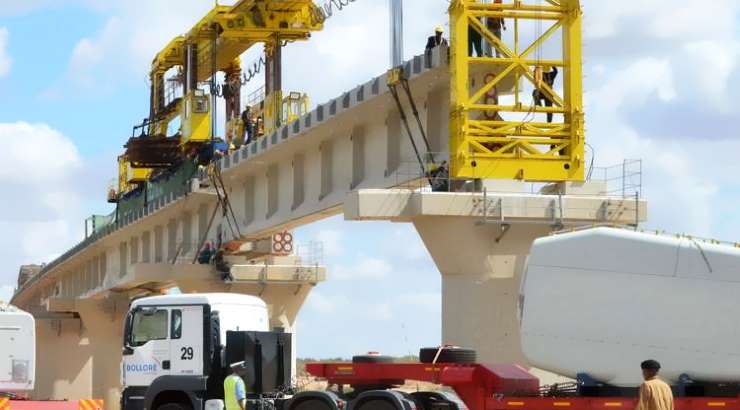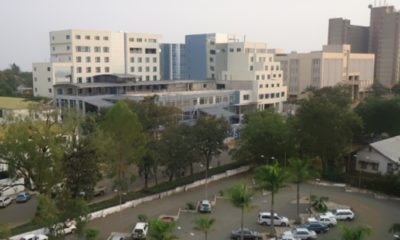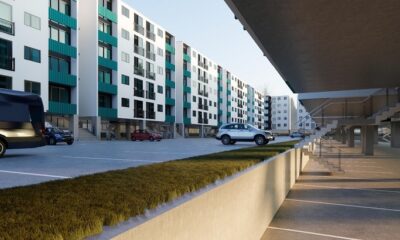Industry News
Construction industry to grow steadily until 2026: BMI report
Kenya’s construction industry will grow by 8.7 per cent this year and remain steady up until 2026.

The Kenyan construction industry is set to grow steadily for the next decade, bolstered by increased number of projects that are expected to be undertaken in various parts of the country.
A new study by BMI Research, a company that analyses industry trends, shows that the local construction industry will grow by 8.7 per cent this year and remain steady up until 2026 with an annual growth of 6.2 per cent – which will see Kenya outperforming all Sub-Saharan countries.
BMI has pegged this growth to the Kenyan government’s huge spending on infrastructure development – with multi-billion dollar projects such as the standard gauge railway and the Lamu Port-South Sudan-Ethiopia-Transport (Lappset) corridor being key drivers of local economic growth.
The BMI study says that the steady growth of transport, power infrastructure and commercial construction will spur key investments that will in turn boost local businesses and retail activity in various parts of the country.
“Kenya’s construction market will record significant expansion over our 10-year forecast period between 2017 and 2026… Significant support for the sector will stem from the Kenyan budget, backed by foreign investment into the country’s planned infrastructure development,” says the BMI study.
The findings come at a time when the construction sector is contending with a general slowdown, which has been occasioned by a general decline in private real estate development.
According to the Kenya National Bureau of Statistics, construction – which comprises buildings, roads and railway – grew at a slower rate of 9.3 per cent in the quarter ending September compared to 15.6 per cent during the same quarter of 2015.
“The slowed growth was mirrored in the consumption of cement that decelerated from 11.0 per cent in the third quarter of 2015 to 5.3 per cent in the review quarter,” KNBS said in its third quarter GDP report.
The KNBS data indicated that there was a significant drop in imports of vital construction materials, especially steel and bitumen.
Standard Gauge Railway
Interestingly, the official data revealed that the slowdown was partly on account of a sizeable reduction in civil works of the Sh327 billion Mombasa-Nairobi standard gauge railway that is set for opening on June 1.
The 2016 growth figures are yet to be finalised, but it is highly probable that the construction sector recorded a significant decline last year – a scenario that was totally unexpected considering that the sector has posted steady growth since 2012.
During the first quarter of last year, construction grew by 9.9 per cent compared to a growth of 12.6 per cent in a similar period of 2015.
The deceleration in the growth of this sector was reflected in the production and consumption of cement whose expansions slowed to 5.2 per cent and 8.3 per cent during the quarter compared to growths of 11.0 and 17.0 per cent, respectively in 2015.
The sector posted a growth of 8.2 per cent in the second quarter of 2016, a slowdown from a growth of 11.2 per cent in the second quarter of 2015.
This is a complete departure from growth levels reported in recent years.
For example, in its 2016 edition of the Economic Survey, KNBS said that construction grew by 13.6 per cent in 2015 compared to 13.1 per cent in 2014 bolstered by the civil works of the standard gauge railway.
The speedy growth was reflected in the local cement production, which crossed the six million metric tonnes mark for the first time in Kenya’s history as manufacturers raised their output to meet rising demand from a construction boom driven by both public and private sector developments.
The 2016 slowdown in construction growth is likely to persist this year due to the level of uncertainty around the August 8 General Election.
The focus for the first eight months of the year will mostly be on completion of on-going developments – with very few projects coming online.
The wait-and-see approach is informed by past incidents, both locally and globally. The disputed 2007 polls and the subsequent post-election violence early 2008 created a sharp decline in construction sector.












